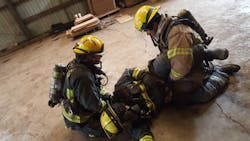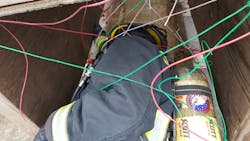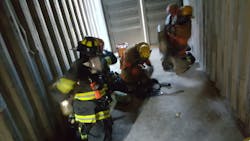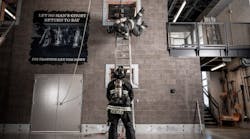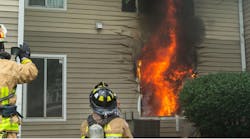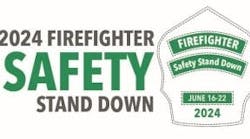In this article, we’ll tackle six myths, review the importance of a “focus on failure” mentality, and then share three effective drills to help prepare your team for real-world mayday scenarios.
Myth 1: We are already ready
The fire service sets standards of performance. When a standard is established, firefighters often perform to the level of the standard or the minimum performance tolerated. Every fire department has a standard for mayday operation procedures that each firefighter is required to know and meet.
The “already ready” myth is perpetuated when firefighters are not tested on the mayday operation standards using a realistic scenario. All realistic mayday scenarios have failure options embedded in the scenario. Forcing firefighters to address possible failures results in questioning whether they are actually ready and leads them to improve performance.
Myth 2: Fire departments are excused from being ready
Every fire department has an excuse for not being operationally ready. Some common excuses: They are the wrong size, have the wrong staffing, have the wrong call volume, or don’t have the correct call type. The truth is there are no valid excuses to not being operationally ready for a mayday event. Firefighter maydays occur in large and small departments, volunteer and paid departments, busy or slow departments, and at commercial or residential fires.
Myth 3: We are passionate and, therefore, ready
This myth is based on a firefighter’s passion being so strong that any mayday situation can be overcome by the sheer force of that passion. Adhering to this myth would mean training and preparation are not necessary for passionate firefighters.
Failure on the fireground is a cause of mayday situations, and the effect is firefighters in trouble. In the fire service, there is a disconnect between this cause-and-effect relationship. A passionate myth-affirming sentiment often spoken by firefighters involves their willingness to die to save a fellow firefighter’s life. But the fire service doesn’t need firefighters willing to passionately die for each other as much as it needs firefighters willing to live for each other.
They need to recognize the cause of the failure and do what is right in order to save a firefighter in trouble. Busting this myth requires recognition of failure as a cause. Only then can passion be in its proper place—to passionately pursue mayday operational readiness.
Myth 4: Past success equates to present readiness
When a fire department experiences the successful mitigation of a mayday event, ego can become a formidable enemy. All mayday situations are a result of failures on the fireground, in the firehouse or at the training center, and must serve as a warning sign against ineffective preparation. The celebration of mayday operation successes needs to quickly move from celebration to identifying the warning signs of the failure(s) within the close calls. The true mitigation of a mayday is done as failures are addressed and solutions are implemented to prevent the same failures from recurring.
Myth 5: The risk is not worth the effort to be ready
Maydays on the fireground should be extremely rare. Some fire organizations use this minimal risk as an opportunity to limit preparing and training for mayday operations, arguing that the training risk itself is not worth the effort. But a firefighter fatality that any department endures reveals a significant risk, and all fire departments should take notice. When the level of risk is accurately conveyed, the training, knowledge and preparation will also be elevated.
Myth 6: Mayday operations are not my responsibility
Many fire departments establish specialty units to serve as rapid-intervention crews (RICs). But when a mayday occurs on the fireground, the rescues are rarely performed by the designated specialty crew. Most mayday operations are performed by crews in proximity and already working inside of the fire building.
Mayday operations are every firefighter’s responsibility. This responsibility requires a focus on the fact that failure is always as an option. This potential failure must serve as a warning and a cause of possible maydays. If a firefighter is in trouble in the fire building you are operating in, then failure is already present. Once all firefighters realize that they must be able to save another firefighter in trouble, regardless of their designated appointments, this myth will be busted.
Focus on failure
The importance of overcoming these six myths is primarily done through focusing on failure. This phrase—"focus on failure”—is indicative of high-reliability organizations. High-reliability organizations have a preoccupation with failure, working to recognize and mitigate failures to maintain and protect the public. Fire departments should be high-reliability organizations.
When we begin incorporating failure as an option in all mayday response training, we expose operational weaknesses that can have catastrophic results. Failure is always a possibility on the fireground, so it should also be a component of training.
When designed properly, training scenarios should have a small percentage of firefighters fail to complete the objectives, with the majority meeting the objectives by overcoming the failures encountered. There should be a small group of firefighters who meet the objectives with no failures encountered. These three outcomes reflect reality. When failures are allowed in training, firefighters can prepare for failures on the fireground.
Recognizing and analyzing failure develops the skills of recognizing warning signs and creates an awareness of training deficits. If failure is not allowed, then the warning signs will be missed on the training ground. This will lead to a failure to recognize warning signs on the fireground, potentially resulting in a firefighter mayday situation or other catastrophes.
Firefighters must also understand that operational failures, such as disorientation, lack of air, loss of water, an absence of situational awareness, etc., are a cause of maydays on the fireground. Mayday operations must be performed in the context of these failures. The volatility and uncertainty of these failures can cascade into an extremely dangerous rapid-intervention response. The cause of the failure must be recognized in order to combat its effects and provide effective training to limit future failures.
Drill for failure—and success
With this in mind, the following three drills are great examples of training scenarios that will allow for firefighters to fail, expose warning signs of operational weaknesses, and focus on failure-based causes.
The Naked SCBA
In order to set up the Naked SCBA drill, you will need several firefighters in full structure PPE with SCBA. The firefighters don their blacked-out facepieces and sit in a safe location. The instructor takes each firefighter’s SCBA and makes it nonoperational by removing the bottle, tightening the straps, and entangling the waste strap. The nonoperational SCBAs and bottles are then placed in a room separate from the firefighters. The PASS alarms are manually activated. The objectives of the drill are to locate an SCBA and bottle, make the SCBA functional, control the PASS alarm, establish an air connection, properly don the SCBA, and then exit the room. This simple drill results in showing the failure in SCBA familiarity, recognizing the warning signs of PASS alarm control, and evaluating causes of SCBA failure.
The Mouse Trap
The objectives of the drill are to identify the cause of the egress, move in an appropriate manner, meet a set time frame, and successfully exit the structure. This drill identifies failures in firefighter’s ability to connect a cause of egress to a change in the time frame, style, and intensity of movement.
Air Supply
In order to set up the Air Supply drill, you will need three firefighters in full PPE with SCBA, blacked-out facepieces and a rapid-intervention air supply. A firefighter victim lays on their side in a room and initiates a mayday for critically low SCBA air levels. The victim’s low-air alarms are alerting, and their PASS alarm is activated. The two rescue firefighters enter the room, find the victim firefighter, and establish an air supply.
The objectives are to find the firefighter in a compressed time frame, identify the failure as a lack of SCBA air, efficiently establish an air connection using the rapid-intervention air supply, and confirm the victim firefighter’s air cylinder levels. The purpose of this drill is to identify the highest priority issue for the victim firefighter and quickly correct the issue. This drill shows failures in familiarity with the rapid-intervention air supply, effective victim firefighter search techniques, mayday cause identification, SCBA emergency procedures, PASS alarm control, mayday communications and prolonged zero visibility.
In sum
Officers must take a hard look at their crews to determine if any of the six myths are being perpetuated and therefore limiting the likelihood of operational success during real-world mayday events. The acceptance that failure is a cause of mayday events, and that failure is inevitable, is a vital shift in perception that can dramatically improve mayday preparation and training. “Focus on failure”-based training produces important feedback related to mayday operational readiness. With this feedback, firefighters’ skills and knowledge can improve.

